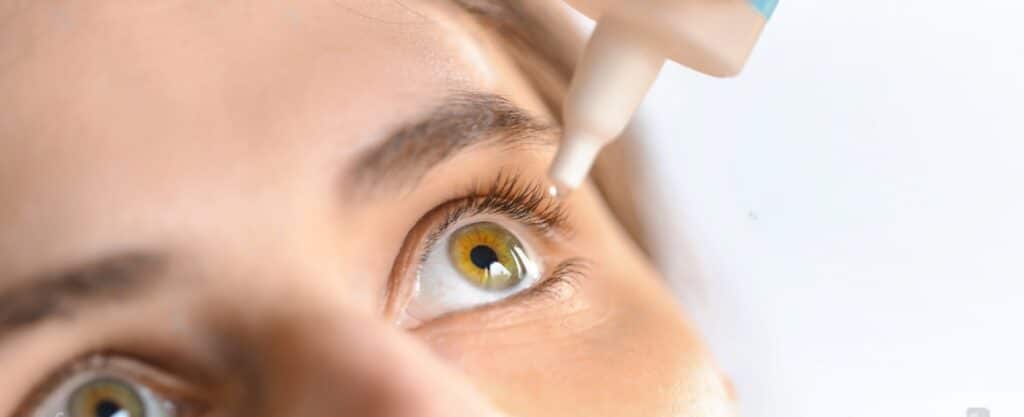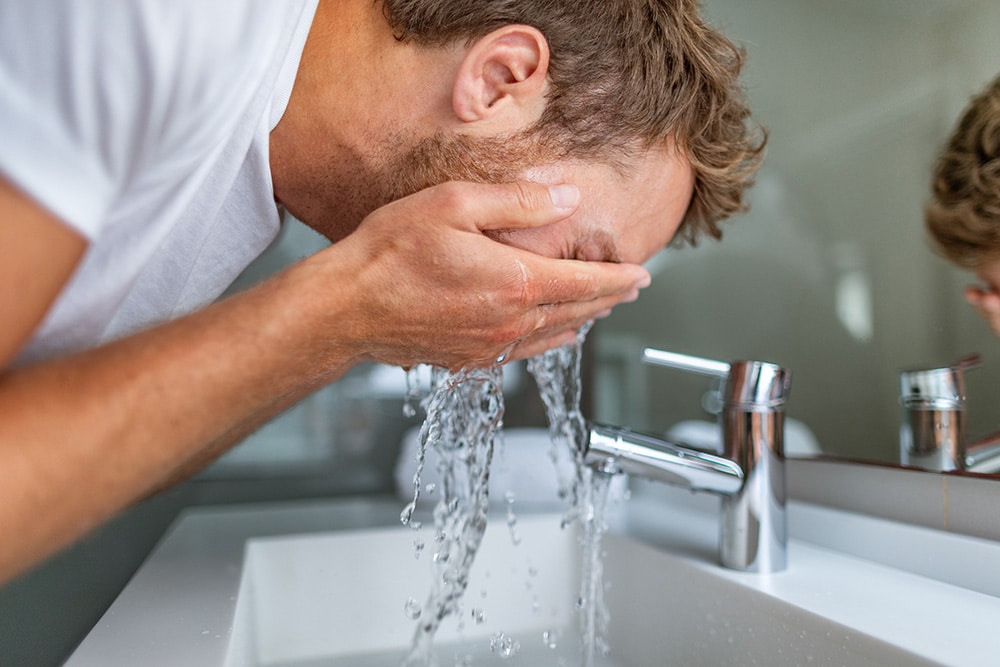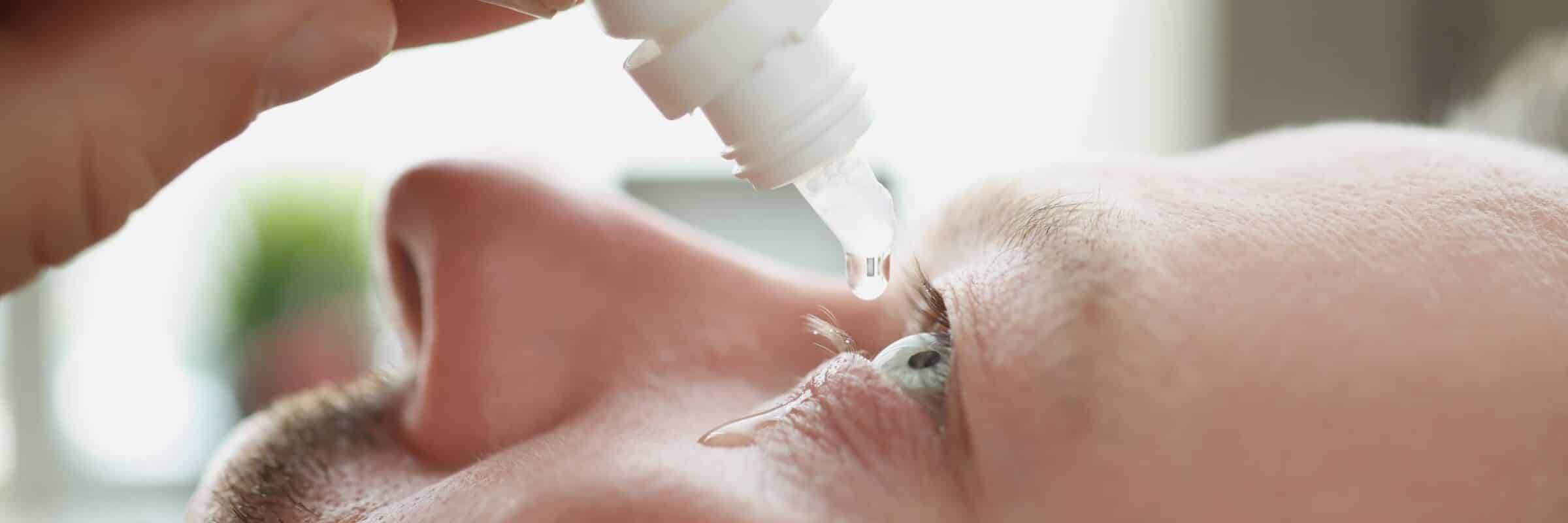Dry Eye Overview
Dry eye is a common medical condition that can cause discomfort and blurred vision, especially for those who wear contact lenses. Dr. Olkowski, a board certified ophthalmologist from EyeSight Hawaii with locations in Honolulu and Maui, has extensive experience in treating dry eye. But how long does it take for symptoms of dry eyes syndrome to go away? The answer may surprise you – in many cases, dry eye symptoms can be relieved in a few days or weeks. In this article, we’ll explore the causes of dry eye, discuss how long it takes for the symptoms to disappear, and provide crucial information about available treatments.
Causes of Dry Eye Syndrome
A disruption in the tear film can cause dry eye syndrome, which is the layer of tears that coats and protects the eye. When this tear film is disrupted, it can cause dryness, irritation, and blurred vision. This disruption may occur due to inadequate moisture or excessive evaporation. Eye health can be affected by various factors such as:
- Age: As we age, our tear production decreases, leading to dry eye syndrome.
- Medications: Medications can reduce tear production and cause symptoms of dry eyes syndrome.
- Environmental conditions: Dry air, wind, and smoke can contribute to dry eye syndrome.
- Medical conditions: Certain medical conditions such as Sjogren’s Syndrome can lead to dry eye syndrome.
- Inadequate tear production: If the eyes don’t produce enough tears, it can lead to dryness and irritation.
- Imbalance in the composition of the tear film: An imbalance in the composition of the tear film can cause dryness and blurred vision.
- Eye Surgery: Certain types of eye procedures, such as cataract surgery, can lead to dry eye syndrome.
- Laser Eye Surgery: Lasik and other laser eye surgeries can cause dryness and irritation due to the disruption of the tear film.
Dry eye can cause redness and irritation in the eyes. Those with dry eyes don’t produce enough or good quality tears, resulting in chronic eye irritation and a stinging or burning sensation. Ointments and artificial tears are commonly used to provide moisture and relief.

Symptoms of dry eyes syndrome
Symptoms of dry eye disease include:
- Blurry Vision: Dry eye can cause blurred vision due to the disruption of the tear film.
- Eye Fatigue: People with dry eyes may experience fatigue or strain when trying to focus on objects for long periods of time.
- Lacrimal Glands: The lacrimal glands produce tears that help keep the eyes lubricated and comfortable. When these glands are not functioning properly, it can lead to dry eye symptoms.
- Light Sensitivity: People with dry eyes may be more sensitive to light than usual, leading to discomfort and irritation.
- Redness: Dry eye can cause redness and irritation in the eyes.
- Burning Sensation: People with dry eyes may experience a burning sensation in their eyes.
- Discharge: Excessive discharge from the eyes is a common symptom of dry eye syndrome.
- Grittiness: Dry eye can cause a gritty feeling in the eyes as if there is something in them.
- Itching: Itching and discomfort are common symptoms of dry eye syndrome.
- Tearing: People with dry eyes may experience excessive tearing due to the disruption of the tear film.
Prolonged exposure to computer screens can lead to eye strain and make dry eye symptoms worse. Looking at digital screens decreases our blink rate by 66%, which is a concerning statistic given the associated risk of dry eye syndrome. Wearing glasses that protect against digital eye strain may help alleviate this issue.

How Long Does It Take For Dry Eye To Resolve?
The amount of time it takes for dry eye to resolve depends on the underlying cause. Generally, if the cause is your age, medications, or environmental conditions, relief just takes a few days or weeks with the use of artificial tears and other treatments. If the cause is related to medical conditions such as rheumatoid arthritis or an imbalance in the composition of the tear film, it may take longer for symptoms to improve. In some cases, a procedure or surgery may be necessary to open blocked tear ducts or stimulate tear glands. With proper treatment and care, dry eye symptoms will disappear.
In the cases where surgery is necessary to open blocked tear ducts or stimulate tear glands, patients can expect to see an improvement in their symptoms of dry eyes syndrome a few months after surgery. With adequate treatment, the eyes should become more lubricated and comfortable over time. In addition, vision should improve as the tear film recovers its normal balance.
It is important for dry eye treatment Hawaii patients to continue using artificial tears and other treatments even after surgery to ensure that dry eye symptoms do not return.
If an eye infection or inflammation is present, a doctor may prescribe oral antibiotics. If the cause of dry eye is a health condition such as rheumatoid arthritis or an inadequate tear film, relieving its symptoms may take longer.

Treating Mild to Moderate Cases of Dry Eye Condition
There are a variety of common treatments for mild to moderate cases of dry eye. Oral antibiotics, such as doxycycline, help to reduce inflammation and improve the quality of tears. Artificial tears can also be used to lubricate the eyes and provide relief from symptoms. In some cases, a chronic condition may require more intensive treatment such as punctal plugs or topical steroids. Punctal plugs are tiny devices that are inserted into the tear ducts to block drainage and increase tear production. Topical steroids can also help to reduce inflammation in the eyes and improve tear quality.
For those suffering from a common condition such as blepharitis or meibomian gland dysfunction, typical treatments include lid hygiene, warm compresses, and oral antibiotics. Lid hygiene involves gently cleaning the eyelids with a mild soap or baby shampoo to remove any debris that may be blocking the glands. Warm compresses can help soften any hardened oils in the glands and allow them to flow more freely. Your surgeon may prescribe oral antibiotics if there is an infection present in the eyelids or glands.
Tear production can be boosted to keep eyes healthy and hydrated, and there are many ways to do this. To ensure proper eye health, one should practice lid hygiene which includes cleaning the eyelids with a mild soap or baby shampoo in order to remove build-up from the glands.

Effective home Remedies for Treating Dry Eyes Symptoms
Home remedies for treating dry eyes can be a great way to reduce the symptoms of this condition. Natural tear production is essential for keeping the eyes moist and healthy, and there are several ways to increase it.One of the most effective methods is to use warm compresses on the eyes, which can help stimulate oil glands in the eyelids and promote natural tear production. Additionally, using artificial tears or lubricating eye drops, which mimic the water and mucus content found in natural tears, can also help keep the eyes moist and reduce irritation. Furthermore, using a humidifier can improve the moist environment and prevent further cornea problems or damage.
In addition to these home remedies, it’s important to look into any underlying health conditions that may be causing dry eye symptoms. Conditions such as allergies, diabetes, thyroid disorders, menopause, and autoimmune diseases can all contribute to dry eye syndrome. If any of these conditions are present, they should be treated accordingly in order to reduce dry eye symptoms. With treatment and lifestyle changes, it’s possible for dry eye problems to go away within a few weeks or months.
Factors That Impact Recovery Time From symptoms of dry eyes syndrome
A variety of factors can affect the recovery time from dry eye. One of the most important factors is the health of the tear film. A healthy tear film is essential for providing lubrication and protection to the eyes, and any disruption to this balance can lead to dry eye symptoms. Additionally, environmental factors such as wind, dust, and smoke can also contribute to dry eye symptoms by irritating the eyes and disrupting the tear film.
Finally, protective eyewear such as sunglasses or goggles can help protect the eyes from these environmental irritants and reduce dry eye symptoms.
In addition to these external factors, lifestyle choices can also impact recovery time from dry eye. For example, smoking has been linked to an increased risk of developing dry eye syndrome due to its effect on blood vessels in the eyes. Furthermore, excessive alcohol consumption has been associated with decreased tear production which can lead to dryness and irritation in the eyes. Finally, certain medicines such as antihistamines or decongestants may also cause dryness in the eyes due to their drying effects on mucus membranes.
By making healthy lifestyle choices and avoiding environmental irritants when possible, individuals can reduce their risk of developing dry eye syndrome and improve their recovery time if they do develop the condition.
In conclusion, dry eye symptoms can take anywhere from a few weeks to several months to go away depending on the severity of the problem and any underlying health issues. Proper treatment and lifestyle changes can help reduce recovery time and improve overall eye health.
When to See a Doctor for Dry Eye Symptoms
If you are experiencing persistent dryness, irritation, or redness in your eyes, it is important to see a doctor for an evaluation. Your doctor will be able to determine if the symptoms are due to dry eye syndrome or another condition such as an autoimmune disorder. They will also take into account your medical history and any other factors that may be contributing to the symptoms.
In order to diagnose dry eye syndrome, your doctor may perform tests such as measuring tear production or examining the surface of your eyes with a microscope. If you have a diagnosis of dry eye syndrome, treatment options may include artificial tears, lubricating eye drops, or medications such as steroids or immunosuppressants. In some cases, your doctor will recommend surgery if there is insufficient tear production due to blocked tear ducts or other issues.
If you have an autoimmune disorder such as Sjogren’s Syndrome, it is important to discuss treatment options with your doctor. This type of disorder can cause inflammation in the glands that produce natural tears which can lead to dry eye symptoms.
Diagnosed cases of dry eye syndrome can be treated with artificial tears, eye drops, steroids, or immunosuppressants. Diagnosing dry eye syndrome may involve tests such as measuring tear production or looking at the eyes with a microscope.

Ready for a consultation?
If you are looking for treatment options and want state-of-the-art laser eye surgery to cure your dry eye disease, the dry eye treatment specialists at EyeSight Hawaii in Honolulu, HI, and Maui, HI. Make an appointment online or call our office to schedule a consultation today!

